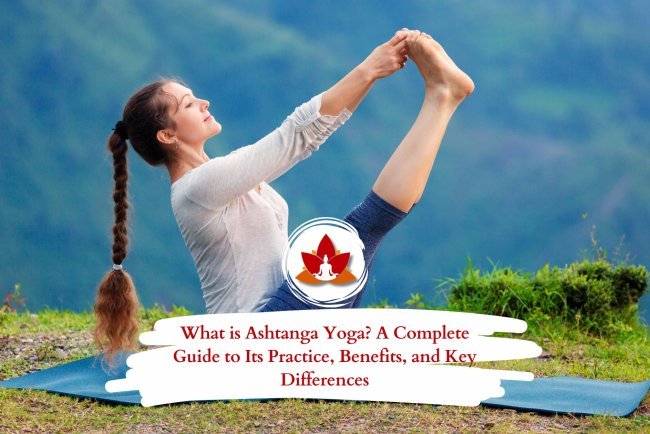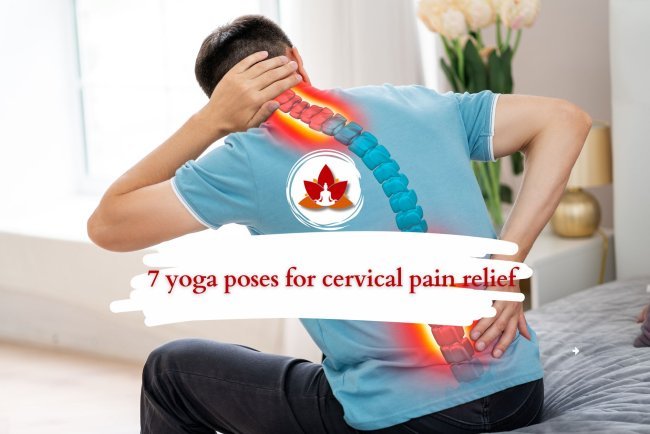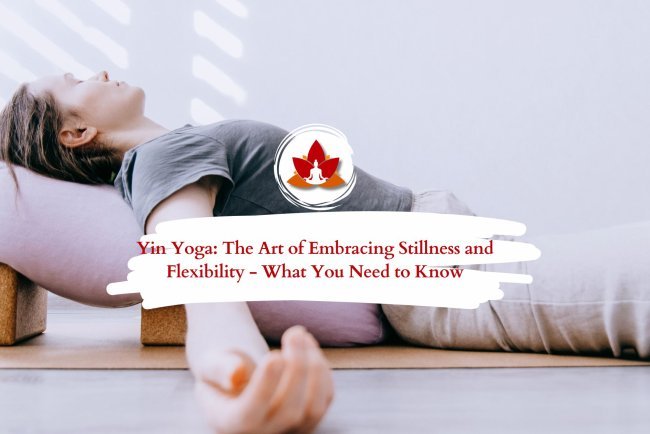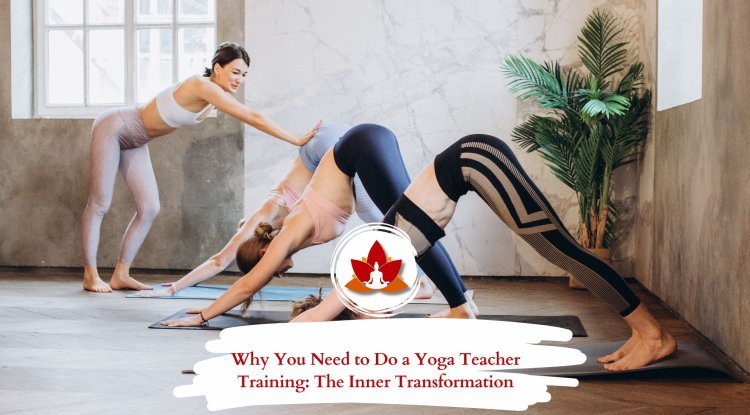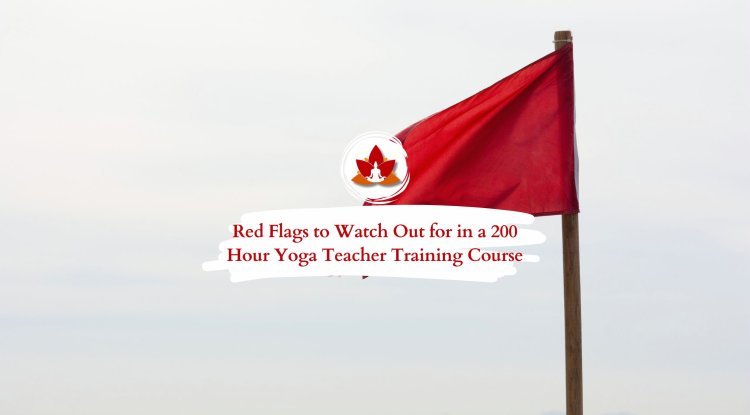Yoga Wheel Poses to Try for Better Flexibility and Strength
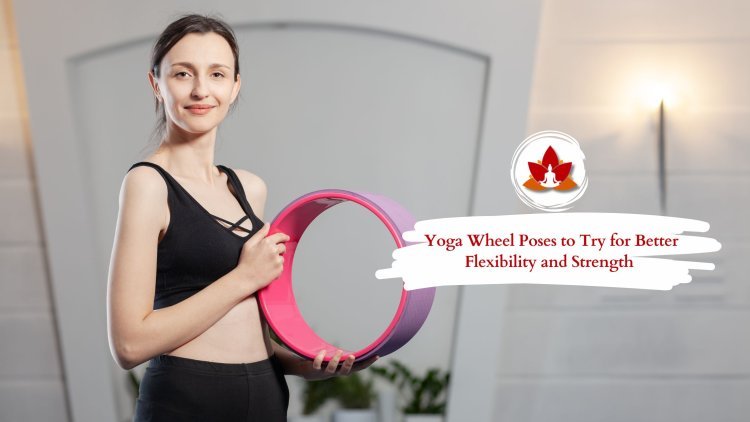
If you’ve ever felt that you’re not flexible enough to do yoga, you’re not alone. The fear of being the only one in class who can’t touch their toes or fully extend in Downward-Facing Dog has kept many people away from trying yoga.
But here’s the good news: yoga is for everybody—regardless of age, ability, or flexibility. Every pose can be modified, making the practice accessible to all body types and skill levels.
Yoga props can also be incredibly helpful in supporting your practice.
-
Blocks provide additional height and stability, helping you ease into poses with more confidence.
-
Straps allow you to extend your reach, making it easier to connect your hands or feet in challenging postures.
-
Bolsters are soft, supportive cushions perfect for restorative or yin yoga, offering comfort and alignment.
If your goal is to build both strength and flexibility, a yoga wheel is a fantastic tool. These round, hollow props are designed to enhance your stretches, decompress the spine, and release muscle tension—especially in the back and shoulders.
The Power of the Yoga Wheel
Elevate your yoga practice with the transformative power of the yoga wheel—a versatile prop that opens the door to:
-
Deeper stretches
-
Enhanced flexibility
-
Stronger core engagement
Whether you’re a beginner or an experienced practitioner, incorporating a yoga wheel into your routine can unlock new levels of strength, mobility, and body awareness.
In this guide, we’ll explore the top yoga poses that pair beautifully with the wheel, helping you safely deepen your practice and discover new dimensions of movement.
Once you've found a yoga wheel that feels right for you, roll into these poses and experience the difference it makes on (and beyond) your mat.
1. Handstand Prep with the Yoga Wheel
A yoga wheel is an excellent tool for developing the strength, balance, and body awareness needed for a full handstand.
To begin, place the yoga wheel behind you while in a tabletop position. Carefully place one foot at a time onto the wheel, then walk your hands forward until your body forms an inverted "V" shape, similar to Downward-Facing Dog.
Maintain straight arms, with your shoulders stacked directly over your wrists, and engage your core fully to stabilize the pose. The elevation provided by the wheel helps shift more weight into the upper body, building strength in the shoulders, wrists, and core.
This variation supports improved balance and control, essential for progressing toward handstands.
Tip: Focus on proper alignment and keep your breath steady throughout the pose to maintain stability and ease.
2. Modified Handstand Prep with the Yoga Wheel
If you're looking for an easier entry point, this variation of the Handstand Prep offers a more accessible way to build the essential components of a full inversion—strength, stability, and spatial awareness.
Instead of placing both feet on the wheel, start by kneeling in front of it. Then, position one shin or the tops of both feet on the wheel. The other foot can remain on the ground or gently lifted for support.
From this position, walk your hands forward until your body forms a shortened Downward-Facing Dog. Be sure to stack your shoulders over your wrists and engage your core to maintain control and stability.
This variation allows you to build strength and awareness gradually, while still experiencing the elevated alignment and body engagement needed for inversions.
3. Headstand with the Yoga Wheel
Using a yoga wheel for support in a headstand is a great way to build core strength, balance, and confidence while working toward a full inversion.
To begin, come into a kneeling position and interlace your fingers to form a stable base. Place your forearms on the mat and gently cup the back of your head with your hands. Lower the crown of your head onto the mat, ensuring a strong and supportive tripod.
Position the yoga wheel behind you, then step one foot at a time onto the wheel. Slowly begin to raise your hips, forming an inverted “V” shape. This setup allows you to experience the sensation of inversion without fully lifting into a traditional headstand.
The wheel supports your legs and helps transfer weight to the upper body, improving alignment and reducing pressure on the neck.
This variation is especially beneficial for beginners or anyone looking to refine their technique in a safe and supported way. It promotes control, awareness, and gradual strength-building.
4. Locust Pose with the Yoga Wheel
This powerful backbend variation uses the yoga wheel to support, elevate, and enhance spinal extension while reducing lower-back strain.
Begin by placing the yoga wheel under your pelvis or lower abdomen, then lie face down on your mat. For stability, place your hands beside your body with palms pressing into the floor.
Engage your back muscles to lift your chest and legs off the mat. The wheel acts as a fulcrum, helping to deepen the arch of the spine while alleviating pressure on the lumbar region.
Keep your legs extended and active, and maintain a long neck by gazing slightly forward or downward.
This variation helps improve posture, increase spinal mobility, and strengthen the posterior chain—including the back, glutes, and hamstrings.
5. Upward-Facing Dog with the Yoga Wheel
A dynamic, heart-opening pose, Upward-Facing Dog with a yoga wheel enhances spinal extension while offering midsection support for a safer, deeper backbend.
To begin, lie face down on your mat and place the yoga wheel under your hips or lower abdomen. Press your palms into the mat beneath your shoulders and straighten your arms, lifting your chest upward.
Keep your shoulders relaxed and away from your ears, and extend your legs back, allowing the tops of your feet to rest on the mat and stay engaged.
The wheel acts as a prop to gently elevate the hips, which helps deepen the backbend while supporting the front body, including the chest, abdomen, and hip flexors.
This variation is ideal for increasing spinal flexibility, opening the heart, and building strength in the arms and back—all while minimizing strain on the lower spine.
6. Bridge Pose with the Yoga Wheel
Bridge Pose with a yoga wheel is a simple yet powerful way to open the spine and chest while gently decompressing the lower back.
Begin by lying on your back with your knees bent and feet flat on the mat, hip-width apart. Carefully slide the yoga wheel under your lower back, positioning it to support your sacrum.
Gently lift your hips and allow the wheel to provide support. Keep your arms relaxed by your sides, with palms facing upward. Let your chest expand and your shoulders soften into the floor.
This variation offers a soothing backbend that helps to release tension in the lower back and hips. It’s ideal for restorative moments, post-practice recovery, or anytime you need to reset and unwind.
7. Boat Pose with the Yoga Wheel
Looking to add a fun and challenging twist to your core routine? Boat Pose with a yoga wheel is a creative variation that enhances balance, strength, and body awareness.
Start by lying on your back. Then lift your legs toward the ceiling and carefully place the yoga wheel on the soles of your feet. Extend your arms forward, keeping your shoulders relaxed and your gaze steady.
The wheel introduces an element of instability, which activates your lower abdominal muscles even more intensely. It also encourages better alignment through the legs and spine.
This variation is excellent for building core strength, improving concentration, and adding a refreshing challenge to your practice.
8. Wide-Leg Forward Fold with the Yoga Wheel
If you're looking for a more relaxed and supportive variation, Wide-Leg Forward Fold with a yoga wheel offers both spinal support and a deeper stretch.
Begin in a seated position, with your legs extended wide apart. Gently fold your torso forward, resting your arms comfortably on the wheel. This allows your upper body to stay lifted and supported, minimizing strain on the lower back.
The pose encourages a calm, steady stretch through the inner thighs and hamstrings, while the wheel acts as a tool of ease and balance. It helps maintain alignment and promotes a sense of both grounding and openness.
This variation is ideal for winding down, promoting relaxation, and gently enhancing flexibility in a soothing, supported way.
9. Reclining Extended Hand-to-Big-Toe Core Variation (with Wheel or Strap)
This variation brings together strength, stability, and control, making it a powerful core and flexibility builder.
Lie flat on your back with one leg extended straight up toward the ceiling. Keep the other leg anchored on the mat. Place a yoga wheel or strap against the elevated foot to support alignment and maintain length through the leg.
Rather than pulling deeply into the stretch, extend your arms forward and lift your shoulders off the ground, engaging the core muscles. The challenge lies in maintaining extension and control without collapsing, creating a steady, controlled activation.
This slow, mindful movement:
-
Fires up the core
-
Stretches the hamstrings
-
Improves coordination and body awareness
It’s an excellent pose for developing functional strength, postural control, and focused core engagement.
10. Lying Over the Yoga Wheel
Lying over the yoga wheel offers a deeply restorative and expansive experience, ideal for opening the front body and gently releasing spinal tension.
Begin by sitting in front of the wheel, then slowly lower your back onto the wheel, allowing it to follow the natural curve of your spine. Let your chest open, your shoulders soften, and your arms rest comfortably at your sides or extended outward.
Your head can gently dangle back for a full release or rest on a block or cushion for added comfort—relaxing the throat, neck, and heart center. Keep your hips grounded, with knees bent or legs extended, based on your comfort.
As you inhale, feel the ribcage expand and the space between the vertebrae open, helping to dissolve stored tension. This passive pose is calming, revitalizing, and requires no effort—making it the perfect way to relax, restore, and reset.
11. Full Cobra with the Yoga Wheel
Full Cobra Pose with the yoga wheel offers a deeper and more supported backbend, encouraging an expansive heart-opening while minimizing strain on the lower back.
Begin by lying face down and place the wheel under your lower ribs or just below the sternum. Press your palms into the mat beneath your shoulders and begin to reach your chest forward and upward, allowing the wheel to roll slightly beneath you.
Keep your legs extended and active, grounding through the tops of your feet to support the spine. As the chest lifts, the wheel assists in creating a fluid extension of the spine while maintaining alignment through the hips and shoulders.
This variation is energizing and expansive, opening up the front body—including the chest, abdomen, and hip flexors—without placing pressure on the lumbar spine.
12. Child’s Pose with the Yoga Wheel
This gentle variation of Child’s Pose offers a soothing stretch through the shoulders, upper spine, and chest, while deepening your sense of grounding and release.
Begin by kneeling on your mat with big toes touching and knees wide apart. Place your hands on the yoga wheel in front of you. As you slowly roll the wheel forward, allow your chest to melt toward the mat.
This action opens the space around the heart and armpits, providing a dynamic shoulder stretch without any strain. The wheel encourages a gentle extension through the upper body while helping tension melt away from the back, neck, and arms.
Perfect for winding down your practice, this variation invites stillness, surrender, and a deeper connection to breath and body.
13. Shoulder Stand with the Yoga Wheel
Using a yoga wheel under the sacrum creates a stable and supportive foundation for exploring a gentle shoulder stand variation.
Begin by lying flat on your back. Place the wheel under your sacrum, then lift your legs toward the ceiling, keeping your pelvis balanced on the wheel. This setup relieves pressure from the neck and shoulders while encouraging length through the spine.
Engage your core and press your arms firmly into the mat to create lift and maintain stability. The wheel allows you to explore inversion with greater ease, safety, and alignment—especially if you're building strength or confidence in a full shoulder stand.
This variation is ideal for gently reversing blood flow, improving circulation, and cultivating balance without strain.
14. Pigeon Pose with the Yoga Wheel
Begin in a classic Pigeon Pose, then slide the yoga wheel underneath your front thigh or hip to offer gentle support and elevation.
This variation allows for a deeper, more accessible stretch, especially through the outer hip and glute muscles, while helping to stabilize the pelvis. The added lift from the wheel reduces strain on the joints and encourages a more balanced and symmetrical alignment.
By relieving pressure and promoting stability, the wheel enables you to soften into the pose without compromising form, making it ideal for tight hips, knee sensitivity, or anyone seeking a more supported hip opener.
15. Full Pigeon (King Pigeon) with the Yoga Wheel
To deepen the stretch and create a more expansive heart-opening, transition into King Pigeon Pose with the assistance of a yoga wheel.
Position the wheel behind you—either to support the lifted back leg or to anchor your hands as you reach for the foot. This added support helps you safely explore the bind without straining the shoulders or lower back.
The wheel encourages greater spinal extension, improves shoulder mobility, and makes this advanced posture more accessible and stable, especially for those working toward flexibility in the quads, hip flexors, and chest.
This variation is ideal for enhancing mobility, cultivating graceful control, and exploring a deeper expression of the pose.
16. Lying Over the Wheel – Restorative Variation
This reclined variation focuses on gently lengthening the spine and releasing tension along the front body, making it perfect for recovery and grounding.
Place the yoga wheel under your mid-back, then slowly lower your torso onto it, allowing the wheel to support the natural curve of your spine. Extend your arms out to the sides or overhead for a deeper chest opening.
Instead of letting your head hang, rest it on a block or pillow for comfort and support. The emphasis here is on passive release, not intensity—making it an ideal pose for relaxation, nervous system reset, and post-practice recovery.
This gentle heart opener promotes ease, spaciousness, and restorative stillness.
17. Balance Over the Yoga Wheel
This playful yet challenging pose is excellent for developing core awareness, equilibrium, and mental focus.
Begin by carefully lying belly-down on the yoga wheel, taking a moment to find your center of gravity. Once balanced, extend your arms forward and legs back, creating a hovering, plank-like position.
Even the smallest movements will activate your deep stabilizing muscles, helping to improve control, postural strength, and concentration.
This variation turns balance into a form of moving meditation—perfect for building coordination, confidence, and mind-body connection.
18. Full Camel Pose with the Yoga Wheel
Begin in a kneeling position with the yoga wheel placed behind your back. As you gently lean into the backbend, reach your hands toward the wheel—either grasping it or resting your palms on top for added support.
The wheel offers a smooth and stable heart opener, reducing pressure on the lower back while encouraging a lift through the sternum and creating spaciousness through the chest, abdomen, and hip flexors.
This variation allows for a safe and expansive backbend, making Camel Pose more accessible and deeply rejuvenating, especially for those working on spinal extension and heart-opening postures.
19. Reclining Paschimottanasana with the Yoga Wheel
Begin by lying on your back and placing the yoga wheel under your ankles or calves. From here, gently fold forward from the hips, reaching for your feet or resting your hands on your shins, depending on your flexibility.
The wheel provides a subtle lift, creating gentle traction through the hamstrings while alleviating pressure from the lower spine. This allows for a deeper, more supportive stretch along the entire back body.
This variation is both nourishing and restorative, offering the benefits of a traditional forward fold with the added comfort of elevated support—perfect for winding down or enhancing flexibility without strain.
Round-Up
As you explore the poses above, you’ll open yourself up to new dimensions of:
-
Balance
-
Alignment
-
Relaxation
Let these practices reenergize and reshape your yoga journey. Remember—every body is different. Listen closely to yours. Practice with awareness, respect your boundaries, and always prioritize safety.
With the yoga wheel as your guide, you’re not just enhancing your flexibility and strength—you’re redefining your practice, one mindful pose at a time.
What's Your Reaction?







